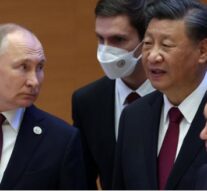
To the era of uncertainty
Economy 18 December 2022Estimated time of reading: ~ 3 minutes
China and the European Union (EU) have a complex and multifaceted relationship that has evolved significantly over the past few decades. The EU is China’s largest trading partner and China is the EU’s second-largest trading partner, with bilateral trade in goods and services totaling over €1 trillion in 2020. The two sides have also established various forms of cooperation on issues such as climate change, energy, and security.
However, the relationship between China and the EU has not always been smooth. There have been tensions over issues such as human rights, market access, and intellectual property protection. In recent years, the EU has also expressed concerns about China’s Belt and Road Initiative, which aims to expand infrastructure and economic development in countries around the world, and its impact on the EU’s global influence. In addition, the EU and China have different political systems and values, which can sometimes lead to misunderstandings and differences of opinion. Despite these challenges, both sides have demonstrated a willingness to work together and find ways to cooperate.
EU exports to China consist mainly of machinery and transport equipment, chemicals, and other manufactured goods. China’s exports to the EU primarily consist of textiles, clothing, and other manufactured goods. In addition to trade, the EU and China have also established various forms of economic cooperation, including through joint ventures, investment, and technology transfer. For example, the EU is a major source of foreign direct investment for China, and Chinese companies have also invested heavily in the EU. There have been concerns about market access and intellectual property protection, and the EU has criticized China for its state-led economic model and state subsidies for its industries.
Despite these challenges, both sides have demonstrated a willingness to work together to address these issues and find ways to enhance economic cooperation. For example, the EU and China have signed a number of agreements over the years to promote trade and investment, and they have also established mechanisms such as the EU-China High-Level Economic and Trade Dialogue to address economic and trade issues.
On April 1, the European Commission and European Council presidents, Ursula von der Leyen and Charles Michel, as well as Josep Borrell, the EU’s high representative for security and foreign affairs, held a nearly two-hour-long video conference with Chinese Prime Minister Li Keqiang and the Chinese President Xi Jinping who expressed their wish that European nations may establish their own opinions of China “independently” at a separate virtual meeting with the two EU leaders today. China and Europe should preserve stability in an unstable world, according to Xi, who also urged increased communication on key problems affecting their bilateral relations and global peace.
Wang Yi, the top China’s diplomat, urged Ukraine and Russia to restart direct communication without conditions. He emphasized that each side must first continue with conversation and negotiations. At the UN Security Council meeting on Ukraine, the Chinese minister stated that restoration without conditions is the parties’ top goal. He urged Moscow and Kiev to think about workable solutions as a precondition for resolving the crisis. According to Wang Yi, during a talk with Josep Borell, the EU’s high representative for foreign affairs, China “will not add fuel to the fire when it comes to the Ukrainian war, but it also won’t be a silent observer and will continue to play its part”. This claim represents an introduction to an era of uncertainty when it comes to China’s attitude towards the conflict in Ukraine, but also towards relations between China and the European Union in terms of security and foreign policy. It remains to be seen how the conflict in Ukraine will unfold, and the balance of power will largely depend on that.
Written by: Nenad Stekić


